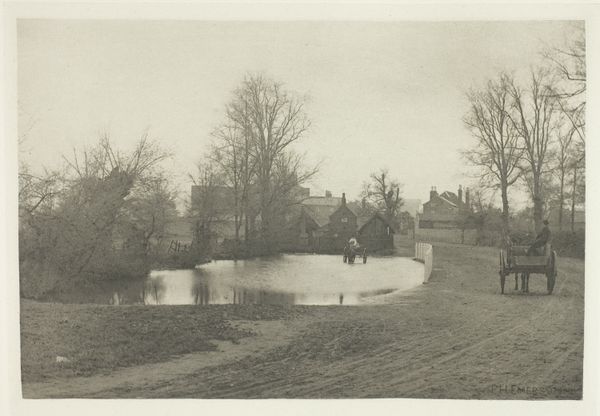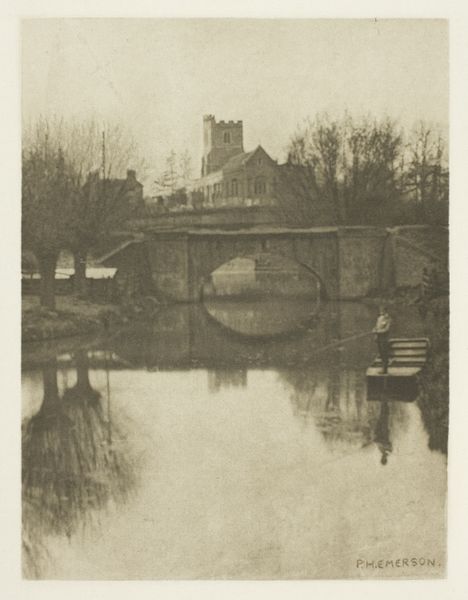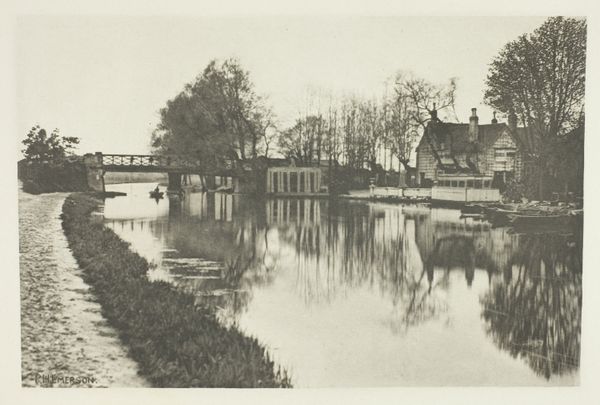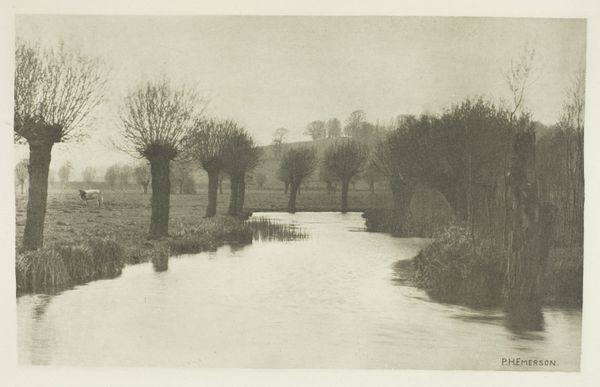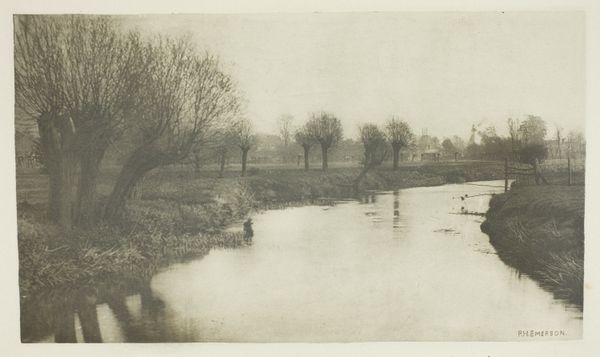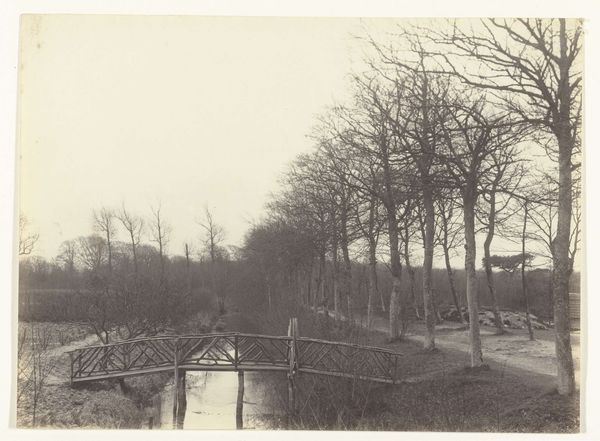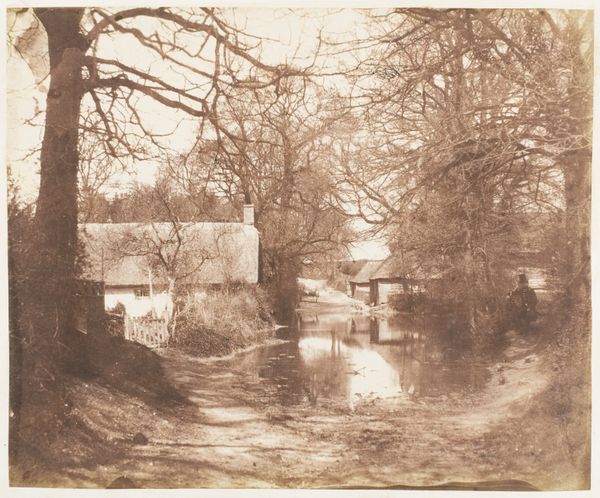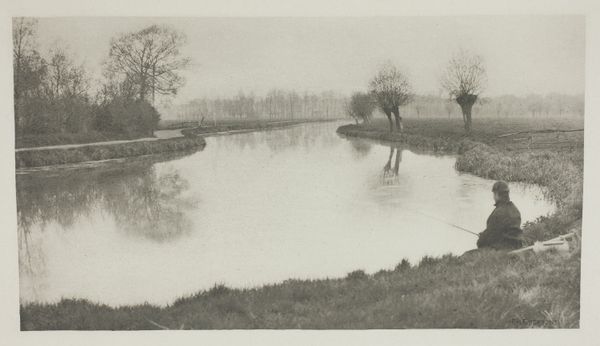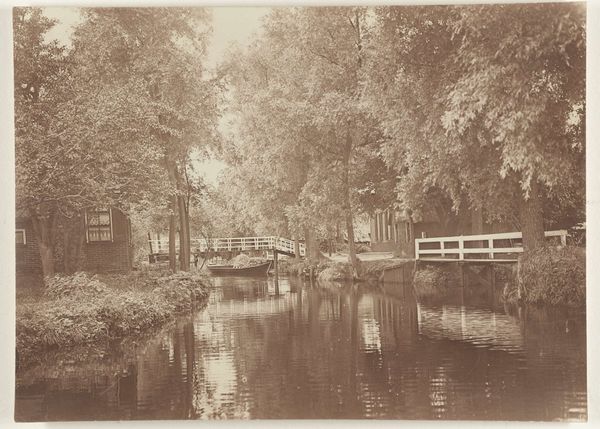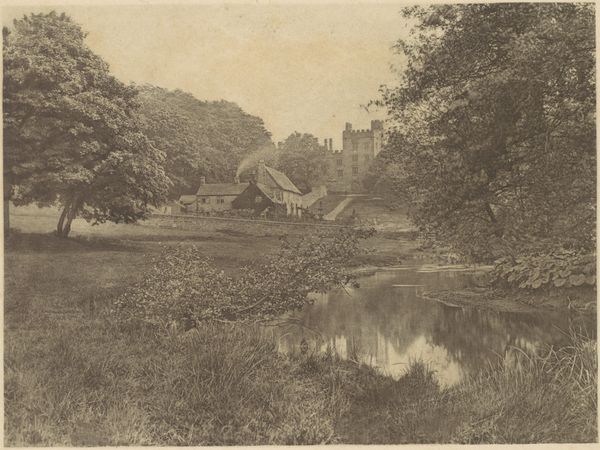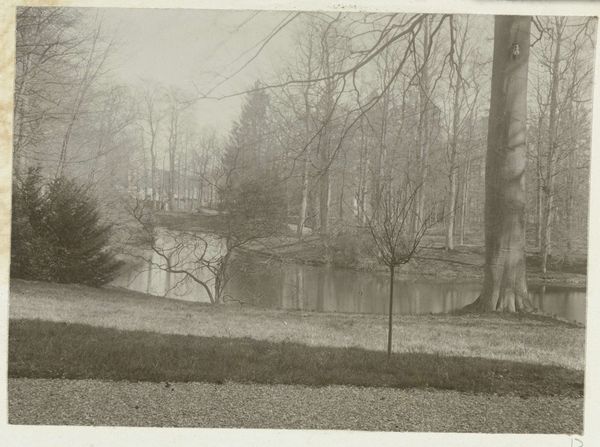
photography
#
16_19th-century
#
natural tone
#
snowscape
#
countryside
#
photography
#
outdoor scenery
#
low atmospheric-weather contrast
#
england
#
monochrome photography
#
nature heavy
#
nature environment
#
scenic spot
#
shadow overcast
Dimensions: 12.6 × 20 cm (image); 14.8 × 21.4 cm (paper); 24.3 × 32 cm (album page)
Copyright: Public Domain
Editor: So, here we have Peter Henry Emerson’s "The Ferry Boat Inn, Tottenham," a photograph from around the 1880s. There's a real sense of quiet stillness to it, like time is standing still on a cold day. What strikes you most when you look at it? Curator: What immediately grabs me is the framing. Consider Tottenham in the 1880s – a rapidly industrializing area. Yet, Emerson chooses this incredibly bucolic scene, almost deliberately turning away from the urbanization happening around it. Why highlight a soon-to-be-obsolete way of life? What's he trying to say about progress and its cost? Editor: So you’re thinking this isn’t just a pretty picture? Curator: Exactly. Think about the photographic process itself at the time. Photography was becoming more accessible, democratizing image-making. Yet, artistic photographers like Emerson were striving for recognition as artists, not just documentarians. Was he consciously romanticizing the pre-industrial era? What anxieties about modernity does that reflect? Editor: That makes me see the 'quiet' I felt in a different light – perhaps it’s the silence *before* a storm, metaphorically speaking. All those trees…nature’s last stand. Curator: Precisely! And note the social implications. Who would have had the leisure time to appreciate, or even access, this idealized view of the countryside? How might this romanticized vision have played into class dynamics of the era? Editor: I never would have thought to dig that deep! This photo seemed so simple at first glance, but it’s loaded with social and historical commentary. Curator: It is, and that tension between appearance and reality makes it endlessly fascinating. Remember to always ask "Who benefits?" from an image and you will be on the right track.
Comments
No comments
Be the first to comment and join the conversation on the ultimate creative platform.

